Patsy Rae Dawson
The true Song of Solomon story speaks of two men--King Solomon and the Shepherd both vying for the affections of the young Shulammite maiden. The verse-by-verse study in The Song of Solomon Love Triangle: God's Soulmating and Lovemaking Guide for a Lifetime of Passionate Sex proves that point as the appropriate verses are discussed. Those facts are grouped together here for easy review.
1. Plural and singular pronouns show who is speaking, whether a group of people or only one person.
For example, in Song of Solomon 1:4 the first two lines use the singular pronoun “me” when the Shulammite speaks. The last two lines change to the plural pronoun “we” when the chorus of Jerusalem virgins answers her. Both the context and the grammar affirm that a division of speakers takes place even though the words are combined in one verse.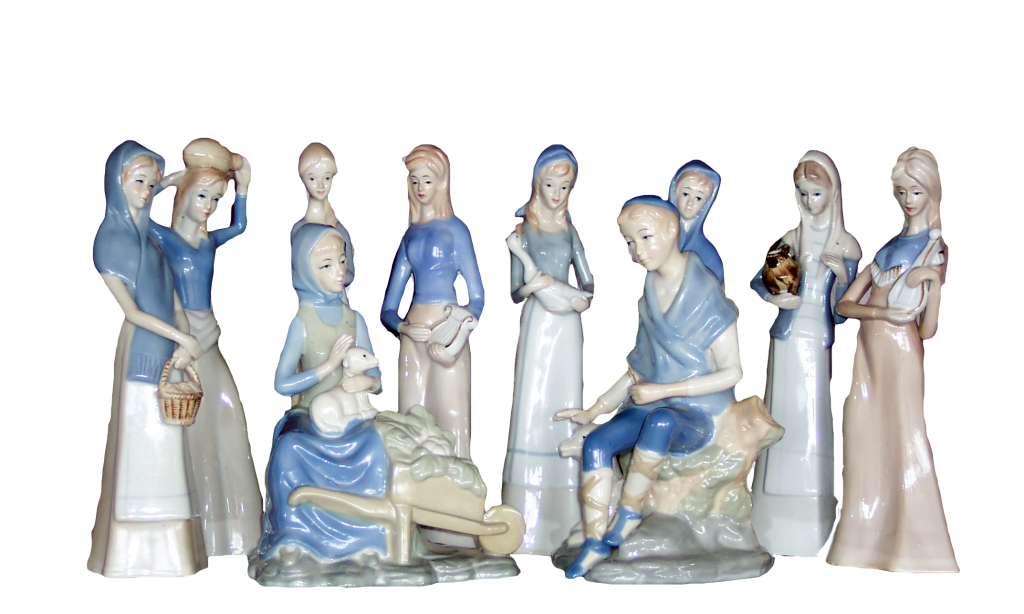
The changing of speakers in the middle of a verse creates another confusing element for some students. Yet the separation of the Bible into chapters and verses is not inspired. Those divisions were assigned centuries after the Bible was written to make the text easier to read and to help find quotations. For this reason, modern students should allow the context to determine when the speakers change rather than strictly adhering to a man-made guide.
2. The original Hebrew used masculine and feminine pronouns which aids the translators in determining whether the speaker refers to a man or a woman.
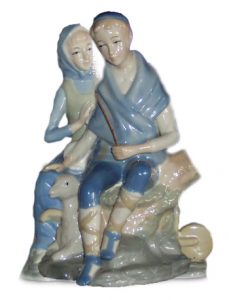
3. One man, who is identified as King Solomon, speaks for himself all the way through the book (Song 1:9-10, 4:1-5, 6:4-9).
The other man, the Shepherd, speaks only through the thoughts of the Shulammite (Song 2:10-14, 5:2) until the actual wedding takes place (Song 8:13) where he speaks for himself. While everyone admits that the story identifies both a king and a shepherd, the Shepherd is the only man whose identity is questioned.
4. The objection is made that people who take the two-men position arbitrarily decide which speaker is Solomon and which is the Shepherd.
This is not true. Only two sections of shepherd scriptures refer to the Shepherd as a shepherd, all the rest refer to him as “my beloved.” This is significant because the Shulammite identifies the Shepherd in both of the shepherd passages as “you whom my soul loves” (Song 1:7) and “my beloved” (Song 6:2-3). This is noteworthy because the expressions “you whom my soul loves” and “my beloved” are used 34 times in the Song of Solomon. In every shepherd passage, except four, the Shepherd is easily distinguished by the fact that the Shulammite identifies the man as “you whom my soul loves” or “my beloved.” However, each of the four exceptions contains verses obviously connected to them that describe “my beloved.” Notice:
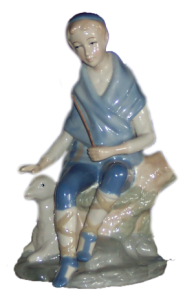 a. Song of Solomon 1:1-4: In verse seven, the Shulammite identifies this man as “O you whom my soul loves,” and goes on to ask where he pastures his flocks. Thus, this passage connects the beloved with the Shepherd. In addition, the Shulammite says, “Draw me after you [second person] and let us [second person] run together! The king [third person] has brought me into his [third person] chambers.” This language shows that she refers to two different men--the one she wanted to run with and spoke to (second person) and the king whom she talked about (third person).
a. Song of Solomon 1:1-4: In verse seven, the Shulammite identifies this man as “O you whom my soul loves,” and goes on to ask where he pastures his flocks. Thus, this passage connects the beloved with the Shepherd. In addition, the Shulammite says, “Draw me after you [second person] and let us [second person] run together! The king [third person] has brought me into his [third person] chambers.” This language shows that she refers to two different men--the one she wanted to run with and spoke to (second person) and the king whom she talked about (third person).
b. Song of Solomon 4:8-15: Verse 16, which is a response to this passage says, “my beloved,” and the response to it in 5:1 uses the terms “my sister, my bride.” The only other place in the song where “my sister, my bride” is used is in 4:8-15. Thus, consistency demands that we recognize this whole section as being one speaker, whom the Shulammite identifies as “my beloved” in verse 16.
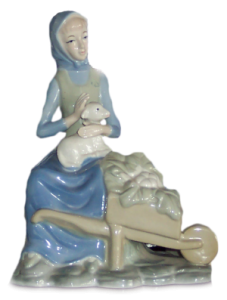 c. Song of Sol. 8:5b-7: Prior to this passage the town people ask, “Who is this coming up from the wilderness, leaning on her beloved.” Obviously, the only man with the Shulammite is “her beloved.”
c. Song of Sol. 8:5b-7: Prior to this passage the town people ask, “Who is this coming up from the wilderness, leaning on her beloved.” Obviously, the only man with the Shulammite is “her beloved.”
d. Song of Solomon 8:13: Here the bridegroom waits for the bride's promise to be his wife. The Shulammite immediately responds in verse 14 with, “Hurry, my beloved,” thus, she identifies him as the Shepherd.
5. Some claim that the shepherd language is just figurative, colorful, poetic language describing wedded love.
However, the only two sections that use the shepherd language do not use it in that way. Neither section calls the Shepherd a shepherd. Instead, both simply describe what he is doing (the normal activities of a shepherd) in order to tell where the “beloved” has gone:
a. Song of Solomon 1:7: The Shulammite is frightened because Solomon has brought her to his tent. She wants to know where the one whom her soul loves is so she can go to him. She asks, “Where do you pasture your flocks?”
b. Song of Solomon 6:1-2: After the Shulammite describes her beloved in glowing terms, the virgins ask, “Where has your beloved gone?” The Shulammite responds, “My beloved has gone down to his garden...to pasture his flocks in the gardens.”
Thus, the shepherd language is not used to poetically or colorfully describe anyone or their longing to be together--it is used only to describe where the beloved is. If the Shulammite and the virgins were trying to find Solomon, it does not make sense to say he was out looking after his flocks since he himself said he was there to inspect the orchard of nut trees, and he was in the palace when they wanted to find the beloved (Song 6:11).
In addition, while the Song of Solomon uses many figurative expressions, each one is used the same way in other parts of the Old Testament or is found in Bible encyclopedias as typical of Hebrew speech. For example, eyes like “doves” is a symbol of peace throughout the Bible, “shoots” referring to children is found in Psalms 128.3, “a spring sealed up” is parallel with Proverbs 5:15, and “gazelles and hinds” is used in Proverbs 5:19. The reader is challenged to find a single example either in the Bible or a Bible encyclopedia of a shepherd or his job being used to poetically or colorfully describe a lover. The rule of interpretation says that a passage must be taken literally unless the context does not allow it. The context certainly allows that the “beloved” was really “pasturing his flocks in the garden.”
6. 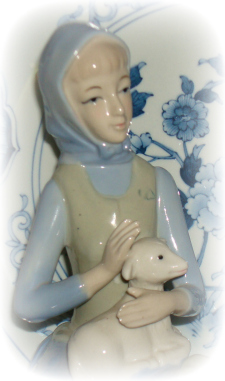 The Shulammite addresses Solomon personally only three times.
The Shulammite addresses Solomon personally only three times.
The maiden is obviously in the King's presence (Song of Sol. 1:4, 12), yet all three times she speaks directly to him, she rebukes his sensuous proposals (Song 2:1; 7:9; and 8:12). The other times that she uses “you” is in the context of either her “beloved” or the shepherd language and is spoken as if the Shepherd were not present--strictly a man of her memory. Yet Solomon uses the word “you” frequently in talking to the Shulammite as if they were standing face to face.
7. The king uses kingly metaphors.
For example, he compares her to his mare among the chariots of Pharaoh (Song 1:9) and to the capital of the Northern kingdom and an army (Song 6:4), etc. Yet the Shulammite refers to Solomon's kingly status only twice and then only to identify where she was (Song 1:4, 12).
8. The Shulammite shows no respect for Solomon as the king.
The maiden brags on her “beloved” because of his shepherding skills. For example, in Song of Solomon 1:7 her beloved made his flocks lie down at noon--a skill only successful shepherds could do because sheep will not lie down at noon unless they have plenty of water and food, are safe from wild animals, and are free of disease and pests. When the virgins wanted to know where her beloved had gone, she told them he was working, pasturing his flock (Song 6:1-2).
If the beloved and the king are the same man, the Shulammite certainly doesn't have the reverence for Solomon that women are commanded to have for their husbands in Ephesians 5:33 or found in the woman of great price in Proverbs 31:10-12. Indeed, the Shulammite would have been aware of Solomon's great chariots and horses because Megiddo, a city just west of Shunem where the Shulammite was from, was where Solomon held 500 of his 40,000 horses. She had plenty of reasons to associate him with horses, but almost none to connect him with sheep. (2 Chronicles 7:5 tells about him sacrificing 22,000 flocks and Ecclesiastes 2:7 says he possessed many flocks and herds.)
Solomon wasn't even in the country to inspect his flocks; he was there to inspect his vineyard (Song 6:11; 8:11-12). The Shulammite had no reason to say that he was taking care of his flocks (Song 1:7). It would make more sense to say he was out in the vineyard--where Solomon said he was and what the Shulammite was doing.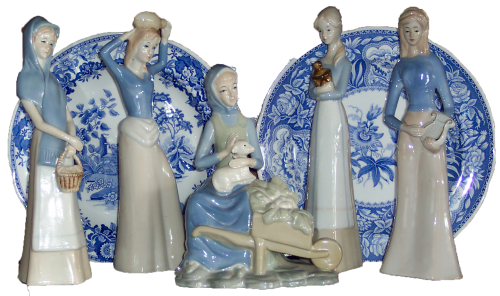
So instead of praising Solomon for the feats he was proud of, as wives are wise to do today, she bragged about an insignificant quality to Solomon, one that was paramount to his father David. This would be like a girl bragging to her boyfriend about how successful and prosperous he is as a truck driver and what a good golfer he is when these are qualities to be admired in his father--not him. This would not go over very well with the boyfriend, and he would soon start to wonder if she were perverted or mentally-ill. No doubt, the boyfriend's mother and father wouldn't be impressed either.
9. This is not a story of marital success if Solomon and the Shepherd are the same man.
At the time of the event, Solomon had 140 wives (Song 6.8), but by the time he died he had 1000 wives (1 Kings 11:3). If the Shulammite was his favorite wife, as some claim, she didn't possess the necessary qualities to keep him interested in her for long. Instead of being an uplifting story, it is a depressing one because true love, purity, devotion, healthy sexual attitudes, and commitment are not enough to win and keep a husband. Yet in Song of Solomon 5:1 God speaks and says, “Eat, friends; Drink and imbibe deeply, O lovers” showing his approval of the marriage of the Shulammite and her beloved.
In addition, kings were told not to multiply horses, wives, or gold and silver in Deuteronomy 17:14-20. The Song of Solomon reflects all of these excesses in Solomon. (Horses: 1 Kings 4:26, 10:28, 29; wives: 1 Kings 11:1-3; gold and silver: 1 Chronicles 9:13-28).
10. It violates the creation account where God created one woman to satisfy Adam's needs.
The creation account plays an important role in the relationship of husbands and wives in the New Testament.
a. Matthew 19:36: Jesus referred back to it in explaining about divorce.
b. 1 Corinthians 6:16: Paul used it to amplify the evils of fornication.
c. Ephesians 5:31: Paul used it to establish the basis for a mental union of husbands and wives through subjection and leadership.
d. 1 Corinthians 11:7-9: Paul used it to show that just because women were given spiritual gifts in the New Testament church, the original law of subjection established at the creation was not done away with.
e. 1 Timothy 2:13-14: Paul referred to the creation in talking about the woman’s relationship to men during acts of worship.
f. 1 Corinthians 14:34: In further discussion of spiritual gifts, it is probably referred to where it says, “just as the law also says.” This seems to be the case because in many ways, 1 Corinthians 11:7-9, 14:34, and 1 Timothy 2:13-14 are parallel passages even though they focus on different aspects of a woman’s public worship. Both 1 Corinthians 11:7-9 and 1 Timothy 2:13-14 refer back to the creation to prove their points. 1 Corinthians 14:34 says, “just as the law also says,” which seems to be a parallel thought.
 The main point of this discussion is that the creation plays an important role in the relationship of men and women. And if only one man and one woman are involved in the Song of Solomon, then the account violates the most fundamental principle of the marriage relationship--the way a man and a woman are suppose to unite to become one flesh physically, mentally, and spiritually. Psalms 119:160 says, “The sum of Thy word is truth.”
The main point of this discussion is that the creation plays an important role in the relationship of men and women. And if only one man and one woman are involved in the Song of Solomon, then the account violates the most fundamental principle of the marriage relationship--the way a man and a woman are suppose to unite to become one flesh physically, mentally, and spiritually. Psalms 119:160 says, “The sum of Thy word is truth.”
11. It has difficulty explaining all the verses according to the one-man theory.
Authors often admit to difficult sections that do not readily fit their position. Plus their versions of the story line are inconsistent with each other. Some think the wedding happened at the beginning of the book and this is the story of their sexual adjustment, with a fight or two thrown in, while others think the wedding took place at the end.
The two-man position does not have difficulty explaining the basic thrust of any verse. The biblical story is very well written with an excellent plot for captivating the intellect as well as the emotions of teenagers--the very ones to whom it was written. The fact that the story can be held up as a first-rate piece of literature only adds further proof of its inspiration by a loving God.
Many of the books written with the one-man position or the collection-of-unrelated-songs-with-no-storyline position seem to use their position in a forced effort to teach certain things about the sexual relationship. While healthy attitudes toward the sexual relationship are both desirable and commanded of God, the Song of Solomon does not have to be manipulated to achieve that goal. The Bible is full of sexual truths that liberate even the most inhibited of souls.
12. If the Shulammite were a good catch for Solomon, she would have had a boyfriend, just as attractive, bright, pleasant girls her age today do.
 This is simply the true story of such a girl who was caught up by Solomon's prestige, wealth, and flattery, then had to make a choice. This scenario happens all the time. We should simply let the Shulammite tell who her beloved is: “He who pastures his flock among the lilies” (Song 1:7, 6:2-3) and enjoy the drama and her maturity while we pray that our own daughters and sons will have the same good common sense.
This is simply the true story of such a girl who was caught up by Solomon's prestige, wealth, and flattery, then had to make a choice. This scenario happens all the time. We should simply let the Shulammite tell who her beloved is: “He who pastures his flock among the lilies” (Song 1:7, 6:2-3) and enjoy the drama and her maturity while we pray that our own daughters and sons will have the same good common sense.
Patsy Rae Dawson is an International expert on the Song of Solomon. Her latest book is The Song of Solomon Love Triangle: God's Soulmating and Lovemaking Guide for a Lifetime of Passionate Sex. She offers Christian coaching on marriage, sex, and divorce.
The pictures are Patsy's collection of the Song of Solomon figurines of the Shulammite, the Shepherd, and the Jerusalem virgins and are copyrighted.
Marriage and Lovemaking Booklets and Chapters by Patsy Rae Dawson
Male and Female: God's Genius! A tremendous amount of evidence surfaced in recent years to prove God's genius in designing the male's and the female's bodies and minds and the way they work together.
Why God's People Make the Best Lovers: Surveys prove that practicing God's rules for lovemaking liberates both the man and the woman for total rapture in the arms of the mate.
Adultery & Sexual Addiction: A Plan for Healing the Soul and the Marriage: Sexual sin is rapidly becoming the number-one marriage problem facing Christians, but God offers a 3-part formula for overcoming it.
Safe Sex: What They Don't Tell You: Since public schools leave God out of sex education, the subject is approached from the viewpoint of a person who just wants to have fun without consideration of God's laws.
The Victims of Victorian Morals: Chapter 3 in Vol. II: God's People Make the Best Lovers shows how Victorian morals continue to victimize sexual love and to cheat countless couples out of the truly happy relationship God desires.
Would you like to learn more about Patsy Rae Dawson's publications? Visit our Bookstore and Free Online Materials.
Permission to Reproduce King Solomon Wasn't the Shepherd
Evidence King Solomon Wasn't the Shepherd by Patsy Rae Dawson. Copyright © 2004, 2015 Patsy Rae Dawson LLC. All rights reserved.
Song of Solomon pictures copyright © 2016 by Patsy Rae Dawson LLC. All rights reserved.
Evidence King Solomon Wasn't the Shepherd by Patsy Rae Dawson is available at SongOfSolomonLoveTriangle.com. It may be copied for noncommercial use only, provided you do the following: 1. Retain all copyright, trademark and propriety notices; 2. Make no modifications to the materials; 3. Do not use the materials in a manner that suggests an association with Patsy Rae Dawson LLC; and; 4. Do not download quantities of materials to a database, server, or personal computer for reuse for commercial purposes. You may not use this material in any other way without prior written permission. For additional permissions, contact Patsy Rae Dawson LLC at Patsy @ PatsyRaeDawson.com.

